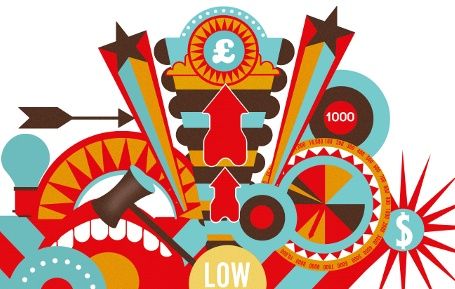Negotiate better fees
Maximising fees isn't about hard-nosed negotiation. It's about understanding your client and, as always, being professional.

There are three essential ingredients to any job: time, quality and people. The ideal job finds a place where everyone is happy with the value attached to these variables.
It sounds simple, but getting the balance right is more art than science, more practice than theory. Once you have it nailed, though, it's just a question of minimising overheads and avoiding unforeseen expenses.
The first thing to remember is that people buy people. As a business, design exemplifies this statement, with clients paying for what you, specifically, can provide for them. If you're a pleasure to work with, they'll be back, so possibly most important thing to get right is your relationship with your client. If there isn't a good degree of understanding and open avenues of communication between client and creative, then the rest is going to be very easy to derail.
"I always like to meet the client in person before working on a quotation," says Mind Design's Holger Jacobs. "Talking about money can sometimes be a bit awkward," he admits, "but as long as you explain the design process and what goes into it well, clients usually understand the fees."
Once you have a rapport with your client and a mutual understanding of where the costs lie, it's possible to build on that without additional expenses seeming to have found their way into the basket via the back door, as it were. Transparency is the key.
When it comes to fees, levels are usually calculated on the basis of how long a job will take, the people it will need and the resources it will require. This sum should be based on simple business logic. However, as Holger rightly observes regarding the final price, "Whatever works for both parties is fair."
Once a number has been fixed though, it's crucial not only that both parties understand where the costs lie but also that everyone is clear on what constitutes a finished job. Last-minute hidden expenses will undermine even the best negotiated fee if the cost falls on you, and may ruin a relationship if it falls to the client. Neither situation is pretty.
Get the Creative Bloq Newsletter
Daily design news, reviews, how-tos and more, as picked by the editors.
"Research, basic marketing and brand positioning considerations should be a natural part of every design process," notes Holger. But there are certain extras that add value but are not essential. For example, Holger says, "We often quote the design of a corporate identity manual."
Another situation which is common is to stipulate a retainer, but, as Georgia Fendley from Construct notes, this may be about putting a cost to something you're already doing: "We spend a lot of time helping clients with other projects or directing things we don't produce." If this is happening and you're not billing, why not?
The ideal situation - the one which maximises return all round - is a long-term designer/client relationship. To help with this, Dan Moore, partner and creative director at Studio Output, has a checklist he runs though with any new client: "Did I enjoy working with the client? Did I do a good job? Could I do more work for them, both in the area I currently work in and in other areas I could deliver on? Did they pay for the job properly and on time?"
If there are plenty of positive answers to the above, then you can conclude that this client relationship is one worth pursuing. Then, as time goes on, you'll begin to understand your client's business better, and this will naturally enable you to see where you can add value to that business via the design that you're supplying for them. Value you can bill for, that is... no sleight of hand required.

Thank you for reading 5 articles this month* Join now for unlimited access
Enjoy your first month for just £1 / $1 / €1
*Read 5 free articles per month without a subscription

Join now for unlimited access
Try first month for just £1 / $1 / €1
The Creative Bloq team is made up of a group of design fans, and has changed and evolved since Creative Bloq began back in 2012. The current website team consists of eight full-time members of staff: Editor Georgia Coggan, Deputy Editor Rosie Hilder, Ecommerce Editor Beren Neale, Senior News Editor Daniel Piper, Editor, Digital Art and 3D Ian Dean, Tech Reviews Editor Erlingur Einarsson and Ecommerce Writer Beth Nicholls and Staff Writer Natalie Fear, as well as a roster of freelancers from around the world. The 3D World and ImagineFX magazine teams also pitch in, ensuring that content from 3D World and ImagineFX is represented on Creative Bloq.
